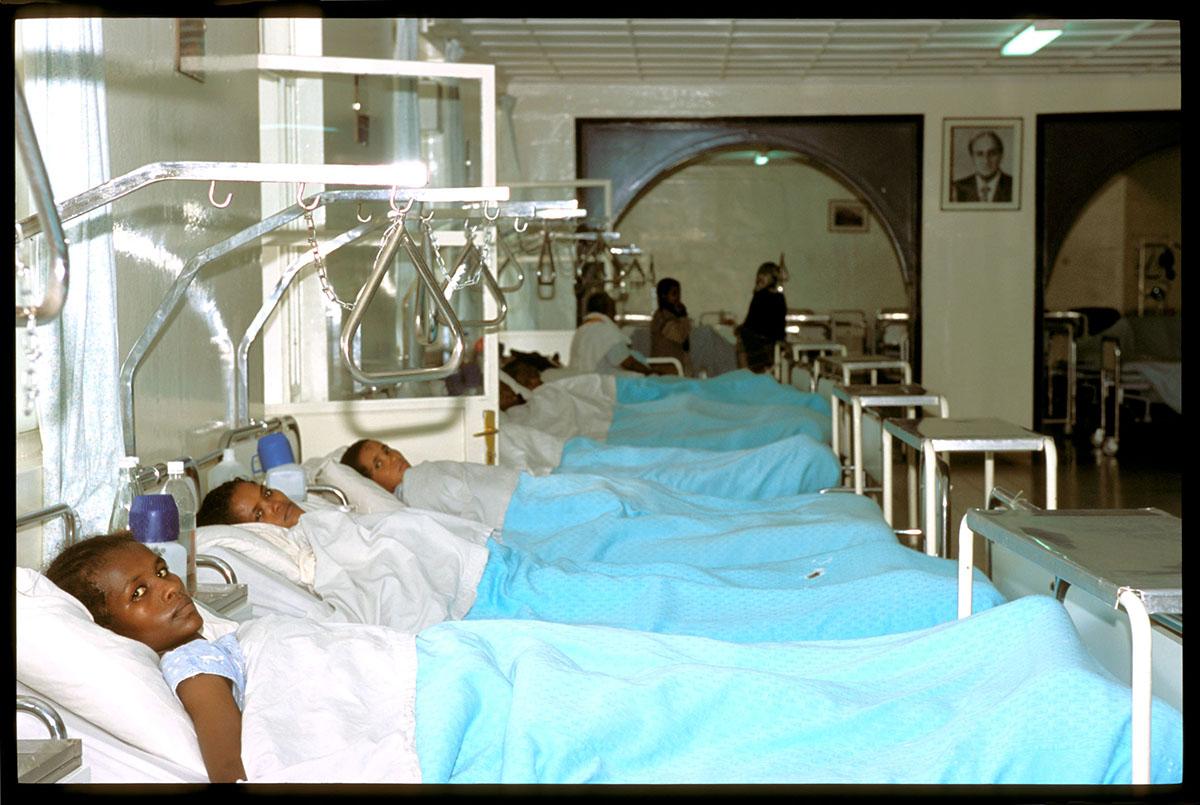
by Layire Diop, PhD Candidate, Media Studies, School of Journalism and Communication
The figures released by the World Health Organization (WHO) are staggering. Even though fistula was eliminated in developed countries a century ago, it still affects two million women around the world (WHO, 2018).
Each year, 50,000 to 100,000 new women experience obstetric fistula, which consists of an abnormal opening between a woman’s genital tract and her urinary tract or rectum. Obstetric fistula is the result of prolonged and obstructed labor, a condition which often leads to fetal and maternal death (Ruder, Cheyney, & Emasu, 2018). According to the World Health Organization, obstructed labor is responsible for up to 6 percent of all maternal death (WHO, 2018). If obstetric fistula goes untreated, a woman may experience constant leakage of urine and/or feces (Khisa et al., 2019). In Sub-Saharan Africa, the lifetime prevalence of obstetric fistula is as high as 3 cases/1000 women of reproductive age, and the figure exceeds 5 cases/1000 women in many countries, including Uganda, Kenya, Ethiopia, and Tanzania (Gebremedhin & Asefa, 2019).
In Senegal, the official figures estimate that 400 new cases are diagnosed annually (UNFPA, 2017). Every year the United Nations Population Fund (UNFPA), in collaboration with the Ministry of Health and different NGOs, carries out a campaign to raise awareness about the condition. The UN agency organizes every year fistula camps throughout the country and offers free surgery to fistula patients. It works with partners such as the NGOs Tostan International and FODDE (Forum for Sustainable Endogenous Development), which are entitled to convince fistula patients to get free surgery. Tostan International is active in the regions of Ziguinchor, Sedhiou, Kolda, Kedougou, and Tambacounda, whereas FODDE intervenes in the regions of Kolda and Sedhiou.
As a development communicator, I was interested in how the two NGOs implement communication campaigns designed to reach out to fistula patients and mobilize the communities for a fight against the debilitating injury. My interest in this topic was based on the premise that fistula patients often suffer in silence because of the stigma and scorn associated with the condition.
I was interested in evaluating the strategies and communication campaigns of the two different NGOs and in analyzing the achievements, constraints, and challenges of each organization. My research therefore addressed three questions:
1) How and to what extent do the campaigns reveal Western top-down approaches to development?
2) To what extent do the campaigns consider gender relations in Senegal?
3) How and to what extent do the campaigns prioritize local forms of communication versus mass media?
The CSWS grant has allowed me to successfully carry out the study. My research draws from interviews with key informants working for Tostan International and FODDE.
The findings reveal that media campaigns developed by NGOs are highly participatory. They are based on a respect of ethical norms and the dignity of fistula patients. The communication campaigns also pay particular attention to gender roles in the different areas.
The teams of social mobilization agents entitled for detecting fistula patients are made up of an equal number of women and men. This approach aims at involving men in the fight against the condition.
In each rural area where the campaigns are implemented, imams and the heads of villages are closely associated to the activities. These resource-persons who represent the points of entry to each village are the first to be informed about the goals and motivations of the communication campaigns. They actively participate in the organization of village meetings, which gather all members of the community, and during which NGOs’ social mobilization agents provide information about the condition, the methods of treatment, and the existence of repair camps organized by UNFPA.
Social mobilization agents also ask the villagers if they know women showing signs of fistula. In case someone knows a woman with those signs, the name of the patient is not revealed in public. It is only at the end of the public meeting that the villagers come to the NGO staff in order to give the name of the patients and the village where they live. The onus is then on the social mobilization agents to reach out to the patients and their families to inform them about the possibility of surgery.
The NGOs generally hold the village meetings in the evening, and social mobilization agents often spend the night in the village. It is frequent that in the darkness of the night, fistula patients come to them to reveal their situation and ask for discretion. The social mobilization agents then take note of their names and phone numbers as well as the phone number of their husbands and other members of their family. The objective is to be able to have access to the patients when fistula camps are organized near the places where they live.
This communication strategy, based on ethics and discretion, has allowed the women and villagers to overcome the taboos that existed about this condition. In many areas, fistula was seen as a result of infidelity. It happened that in many villages, the population denied the existence of women with signs of fistula, and fistula patients even felt shunned, and shied away from NGO staff. Today, the tendency is for women with fistula to understand that their situation does not have to lead to fatality. In certain cases, fistula patients who have been living with the condition for over twenty years have finally been offered surgery.
The NGOs supplement this interpersonal communication through the use of mass media. Information about the condition is translated into different local languages. Brochures written in local languages are used as vehicles for messages related to the symptoms, causes, and consequences of obstetric fistula, but also the possibility of cure. Sketches are also performed in local languages. The study also shows that radio programs rank among the most used tools for message dissemination. Tostan International and FODDE have signed contracts with community radios for the broadcast of programs related to obstetric fistula.
The challenges for both organizations are related to the availability of funding. UNFPA does not support the economic reinsertion of fistula patients who have undergone surgery. Neither does it provide funds for the subsistence of family members who accompany the patient who needs access to surgical repair. Tostan International and FODDE have called for additional donors, which would spur the fight against fistula. Additional funding would allow these NGOs to lend a helping hand to more women injured in childbirth, who otherwise may continue to be treated as pariahs in their communities.
—Layire Diop earned bachelor’s and master’s degrees from Cheikh Anta Diop University-Senegal and an MS from Drexel University, where he attended on a Fulbright Scholarship. A PhD candidate in Media Studies, School of Journalism and Communication, he has extensive experience as a journalist, news anchor, and editor at the Senegalese National Broadcasting. Diop received a 2018-19 CSWS Graduate Student Research Grant in support of this research.
References
Gebremedhin, S. & Asefa, A. (2019). Treatment seeking for vaginal fistula in Sub-Sharan Africa. Biorxiv, doi: https://doi.org/10.1101/623520
Khisa, A. M.; Nyamongo, I. K. ; Omoni, G. M. & Spitzer, R. F. (2019). A grounded theory of regaining normalcy and reintegration of women with obstetric fistula in Kenya. Reproductive Health, 16(29), doi: https://doi.org/10.1186/s12978-019-0692-y
Ruder, B.; Cheyney, M.; Emasu, A. A. (2018). Too long to wait: Obstetric fistula and the sociopolitical dynamics of the fourth delay in Soroti, Uganda. Qualitative Health Research, 28(5), pp. 721-732.
UNFPA (2017). A new start for women who have undergone fistula surgery. Retrieved from https://senegal.unfpa.org/fr/news/nouveau-départ-pour-des-femmes-opérées-de-la-fistule0.
WHO (2018) https://www.who.int/features/factfiles/obstetric_fistula/en/

